A Private Tour today in North Norfolk, focused more on photography and on visiting sites which could be worth spending more time at over the coming days. With a cold and blustery NW wind, it was a decidedly chilly and unspring-like day, but we managed to dodge the showers and stayed dry.
After our last visit, the number of Shorelarks at Holkham had dropped to one since and there had been no sign of that yesterday, so we thought it might have gone too. Then it was reported again first thing this morning, and since Grey Partridge was also on the target list, we decided to have a look there first.
As we arrived at Holkham, some dark clouds were just pushing inland and we could see blue skies approaching from the north. We parked on Lady Anne’s Drive and set off towards the pines. The pair of Grey Partridges were in their usual place on the grazing marsh, though not as close as they can be at times, and we found a spot where we could some shots. A Willow Warbler and a couple of Chiffchaffs were singing in the sheltered side of the pines and a Sedge Warbler was display flighting from the brambles.
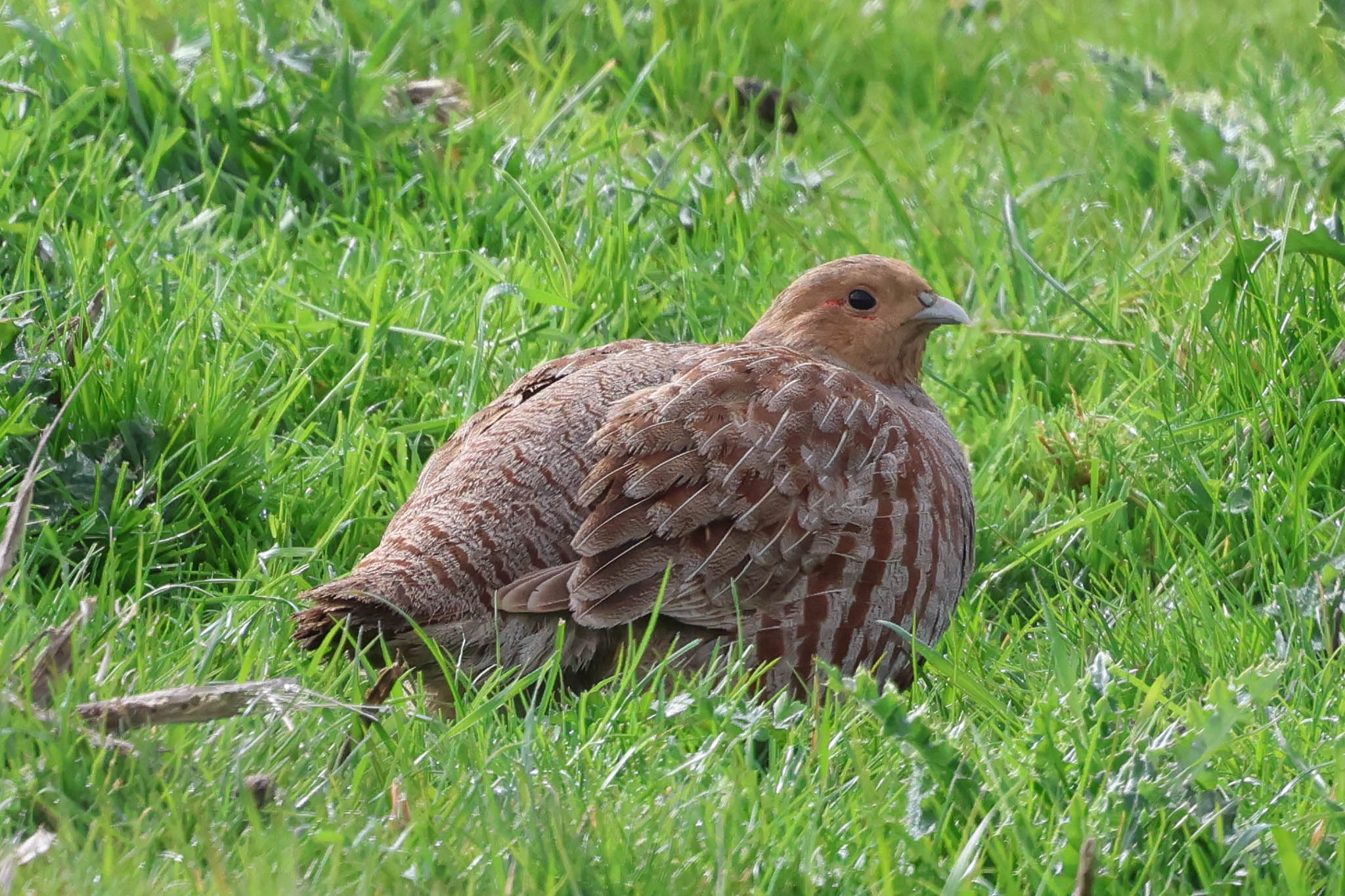
It was breezy the other side of the pines and the wind had obviously pushed the tide in over parts of the saltmarsh as it was quite wet looking out at the Gap. A small flock of Brent Geese were feeding out in the vegetation and a couple of Oystercatchers were feeding on the edge of the path. We set off east, and the Beach Warden in his ATV flushed several Shelduck and the Oystercatchers from the path ahead of us.
The sun was out now. There were a few Meadow Pipits on the saltmarsh and ahead of us we noticed a Wheatear too. We stopped to look, and realised there were more Wheatears further up. We counted at least seven in the end, northbound migrants presumably dropping in here to feed rather than heading on out over the sea into the strong headwind. They looked particularly smart in the low sunshine, so we stopped to watch them for a while.
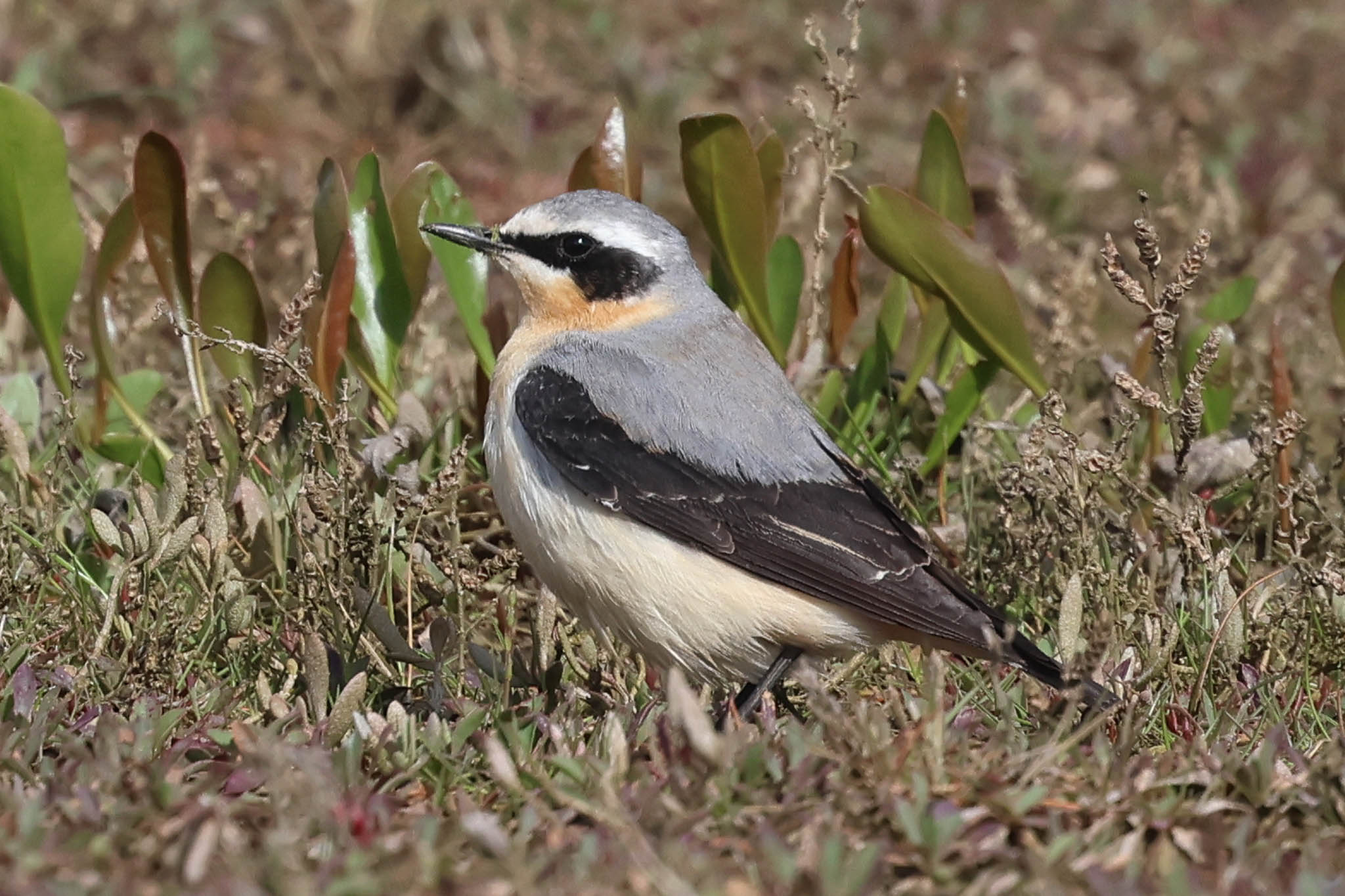
Continuing on to the cordon, there was no sign of the Shorelark now (as of the time of writing, it still hasn’t been seen again). There were a few Meadow Pipits and Skylarks feeding in the vegetation and a couple of Ringed Plovers down at the far end around the sandier patches. We had a good look, but drew a blank, so we decided to head back and get out of the wind. On our way, we heard a Greenshank calling and looked over to see it drop down on the pools now at the beach end of the Gap path. Another migrant stopping off in the wind.
We were going to have a walk at Burnham Norton, to look for Yellow Wagtails, but when we arrived we could see rain approaching. The cattle were right over by the seawall, so it would be very wet and windy out there shortly. We decided to try something else. There were lots of Avocets and a few Lapwings out on the grazing marshes, a Marsh Harrier quartering out over the grass, and a Spoonbill flew over.
Yellowhammer was another target species, so we headed inland in the minibus to see if we could find any. The weather was not ideal to find birds singing today, but at the first place we visited we heard one as we drove up. We found somewhere to stop and got out, just in time to see the Yellowhammer drop off the wires and down into the field below, behind a high hedge. As we walked back down the road to see if we could see in to the field, it flew out and landed in the hedge the other side of the road, beyond where we had parked. As we walked over to look for it, it came up into the top of the hedge, just enough time to get a few shots, before it flew back to the field where it had been earlier. A pair of Grey Partridges flew across the road and landed in the crop the other side.
We tried another couple of sites for Yellowhammer, but the first was quiet, the seed strip now looking quite bare, and at the second we could hear one calling as we pulled up but it went quiet when we stopped and we couldn’t find it. It was a bit too windy – a project to revisit over the next few days. We decided to head over to Cley.
We drove down to the beach car park first, to look for waders in the Eye Field. There were a couple of Ruff around the pool as we drove down the road and as we drove on towards the car park we realised too late that there were two more, males moulting into breeding plumage, in the near edge of the field immediately beyond the fence. Unfortunately, as we pulled up in the minibus they were too close to the road and spooked.
We could see the flock of twenty or so Bar-tailed Godwits further back in the field, so we parked in the car park and walked up to the fence at the back of the overflow parking area. They were a bit far for photography, but there was no way we could get much closer to them without spooking them, so we had to content ourselves with some more distant flock shots. There were some nice rusty summer males in with them. It was time for lunch, so we drove back to the Visitor Centre. A Lapwing posed for photos on the grass by the road as we left the car park.
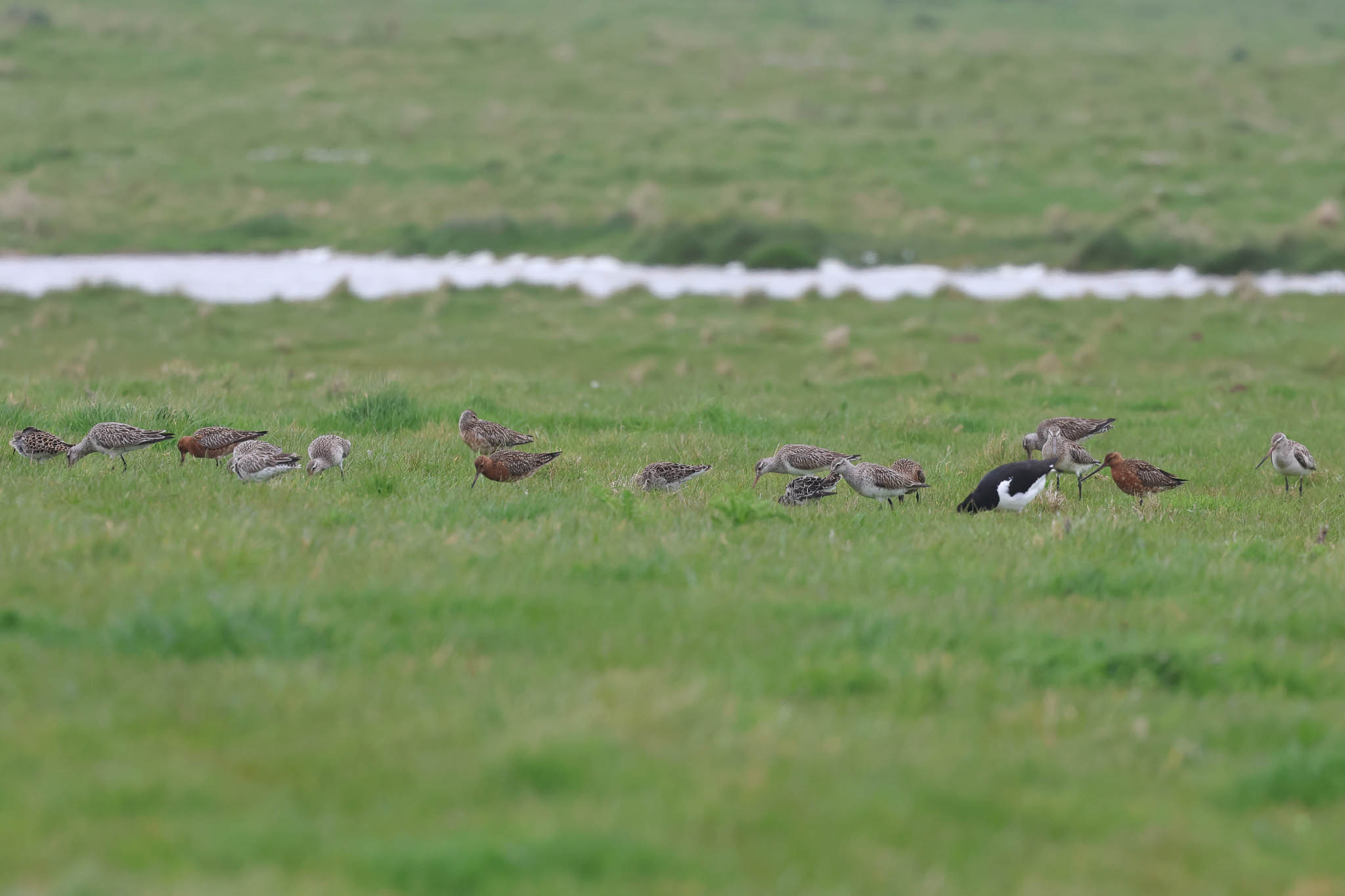
It was too windy to use the picnic tables, so we sat on the back of the minibus in the shelter of the bottom car park. We had been intending to spend an hour or two in the hides here this afternoon, hoping to catch up with the long-staying Long-billed Dowitcher plus any other close waders and possibly a Spoonbill dropping in. There had been no news on the dowitcher all morning, so we already feared the worst and speaking to staff in the Centre confirmed that it had not been seen today. It has been here for over 6 months, so perhaps it has finally decided to move on. Time for a change of plan for us.
We drove down to Kelling for a walk down the lane towards the Water Meadow. One of the fields at the top of the lane was just being cultivated, so there were no Brown Hares in there today and none in the weedy field opposite either. There were few warblers singing here too, as we walked down to the copse, possibly due to the cooler weather. Looking across from the gate, we could see lots of Hares more distantly on the field opposite still and then we found at least seven hunkered down in the next field by the path. There was a quick burst of boxing activity from two of them, but mostly they were keeping down out of the wind. Another pair of Grey Partridge were in the field here too.
From down at the crosstrack, there were a few commoner ducks on the Water Meadow. A Common Whitethroat flew across but disappeared into the alexanders and brambles on the Quags. A couple of 2nd summer Mediterranean Gulls flew over, one called several times and did a quick circuit round over the pool. A Stonechat perched up on the top of the brambles down the lane towards Salthouse.
As we drove back west, we diverted down to the beach car park at Cley again, to see if the waders were any closer. The Bar-tailed Godwits had moved further back, so we turned round and headed on to Morston. There had been a few Ring Ouzels here over the last few days, more migrants waiting for suitable weather conditions to continue on to Scandinavia.
As we walked down the footpath, we could hear a Ring Ouzel calling in the trees and had a brief glimpse of one as it flew out and back in again. We carried on down to the end and installed ourselves by the gate, to wait for them to drop down into the field to feed. They were not particularly accommodating today, and for some time we had glimpses of them flying in and out, and one perched briefly in the bushes.
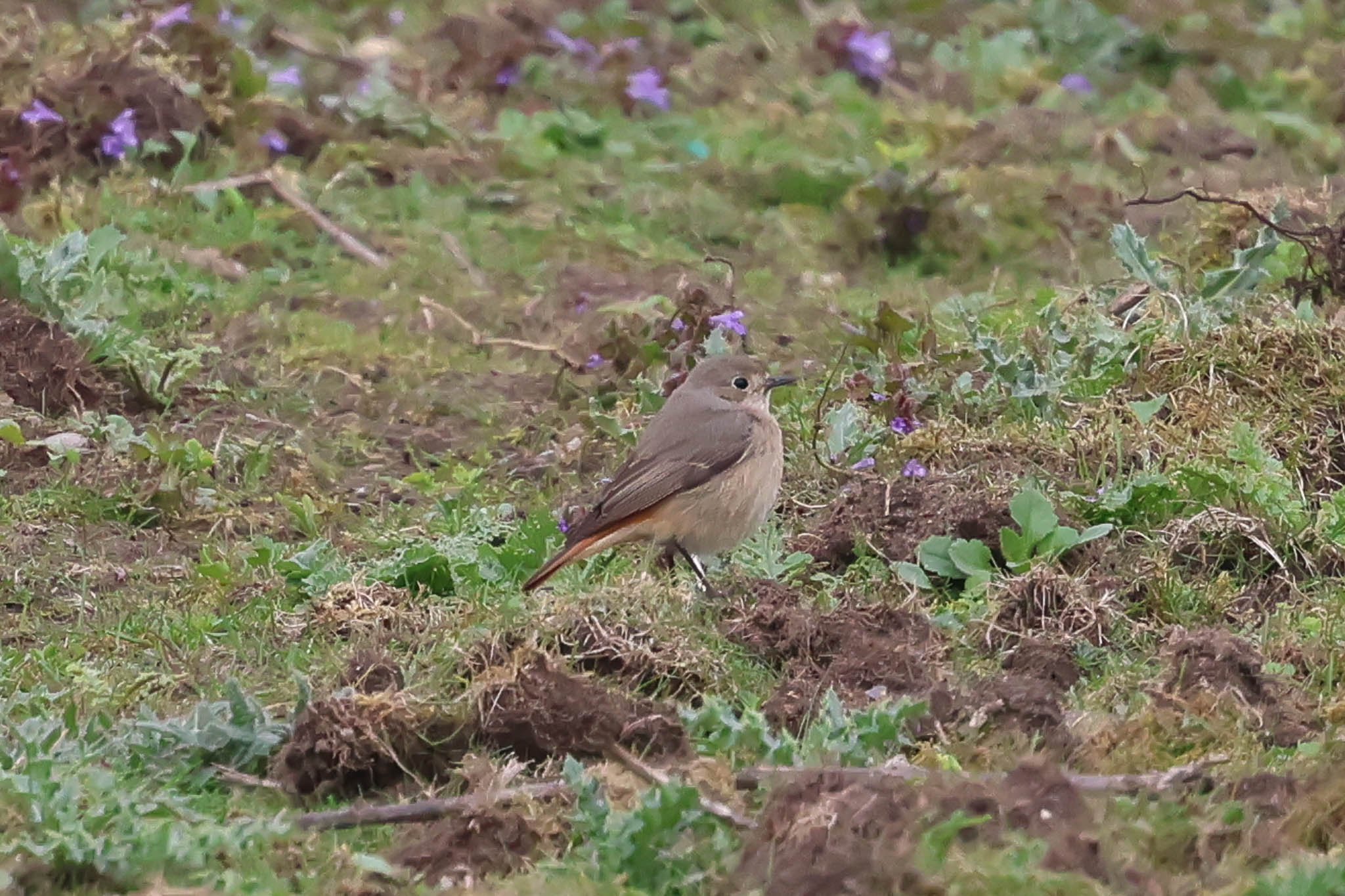
We noticed some movement at the bottom of the hedge across the end of the field, and a flash of red. It was a Common Redstart, a female, a scarce migrant here in the spring. We watched it as it kept dropping down to the ground to feed and then flicking back up into the hedge. There were two more Grey Partridges here too – it was a good day for those today!
Eventually the Ring Ouzels did drop down into the field. Two males fed on the grassy edge for a minute or so, before moving out into the middle with a Blackbird. They didn’t linger long though today, and soon flew back up into the trees. They had been showing really well here with patience in previous days, so another one to try again when the wind dropped later in the week.
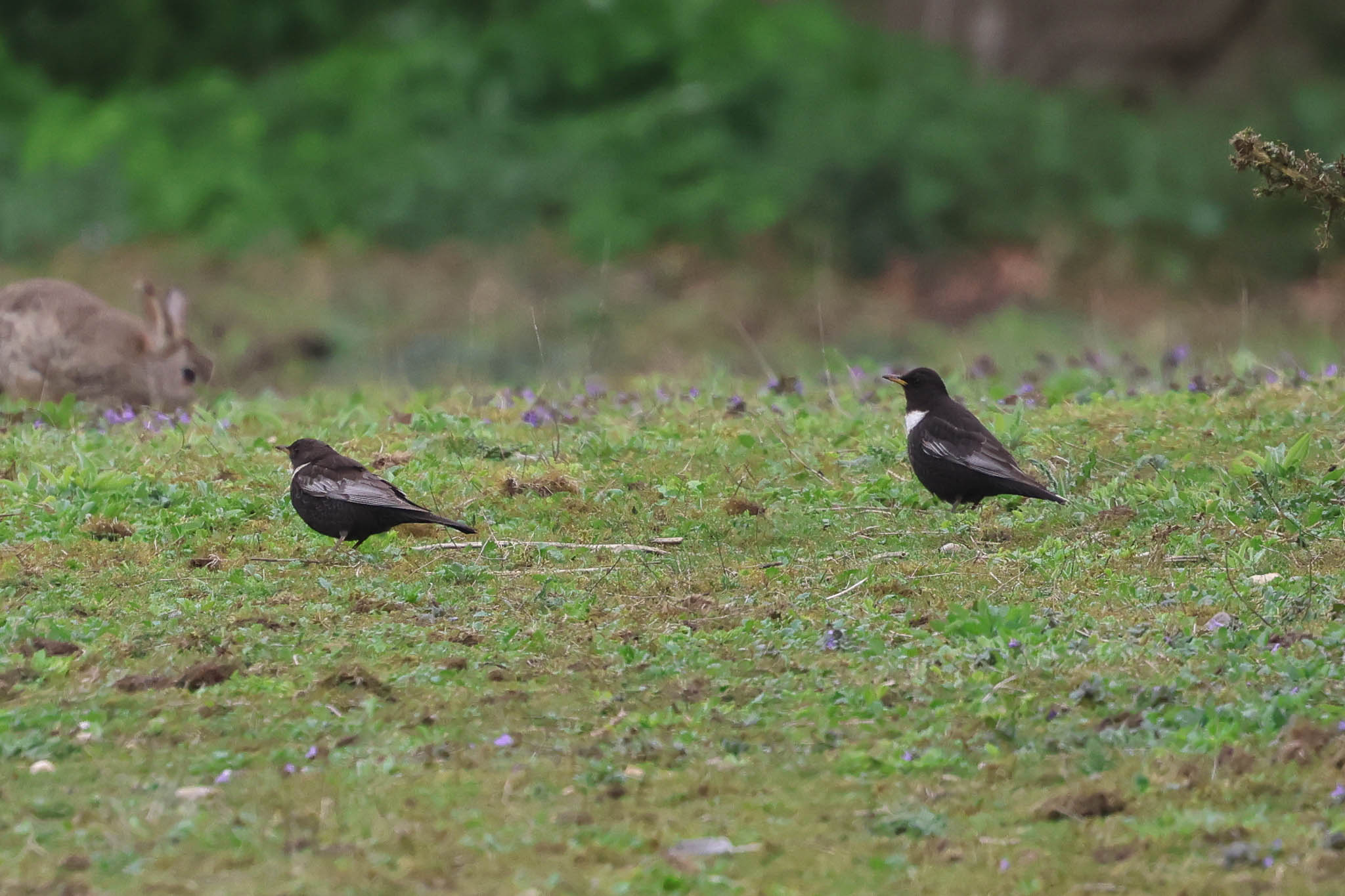
A Whimbrel flew over and dropped down towards the saltmarsh. We lost sight of it behind the bank, so we walked up and had a look on the pools to see if it was there. There was no further sign of it, although there were a few Brent Geese out on the saltmarsh.
Round at the harbour car park, we found another Whimbrel feeding in the harbour channel. Using the minibus as a mobile hide, we were able to position ourselves for great views of it down on the edge of the water, before it disappeared back into the saltmarsh beyond.
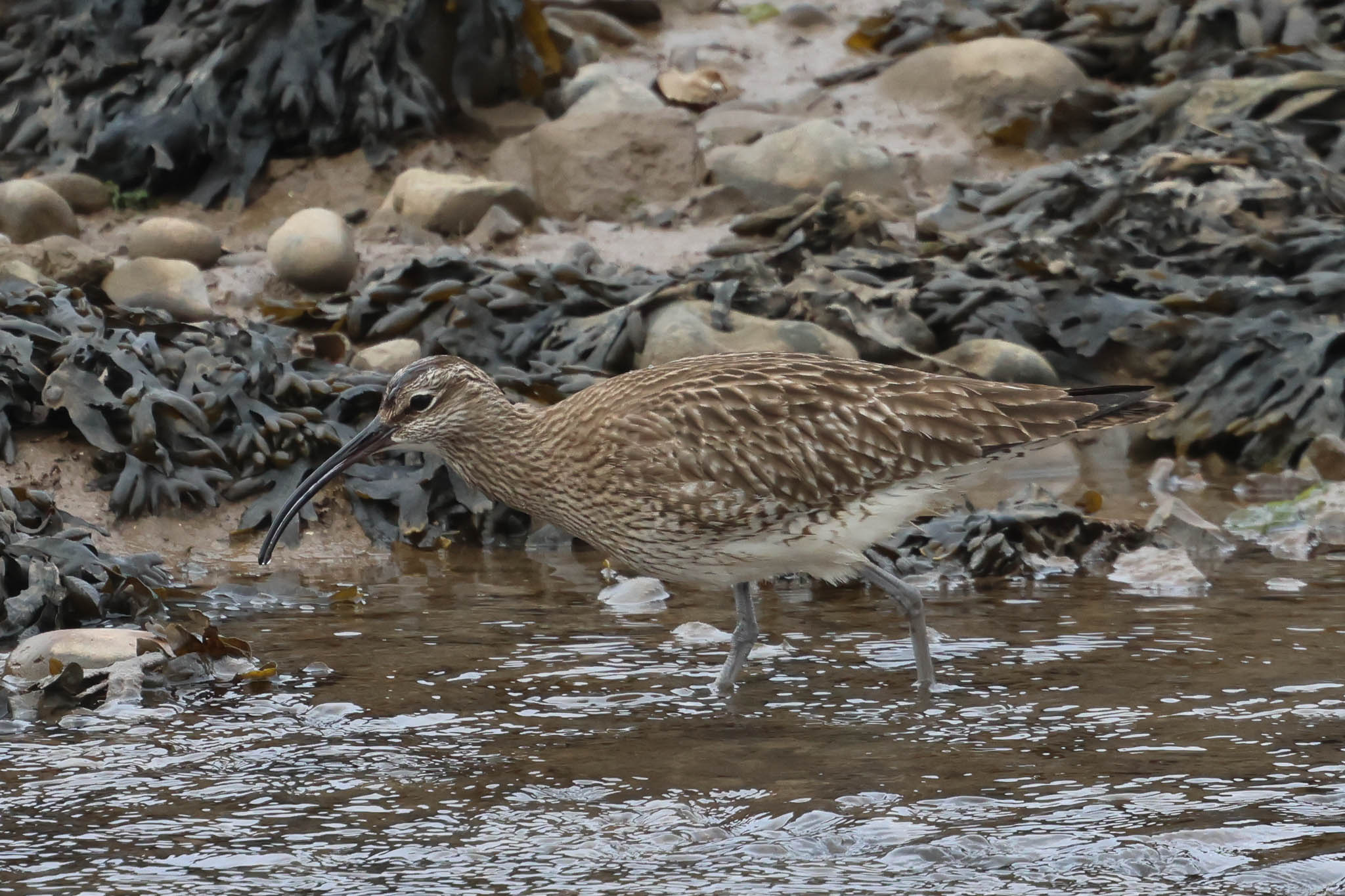
A nice way to end the day. We had some mixed fortunes in the wind, but there were now several places to revisit and lots of things to follow up on over the coming days.
















